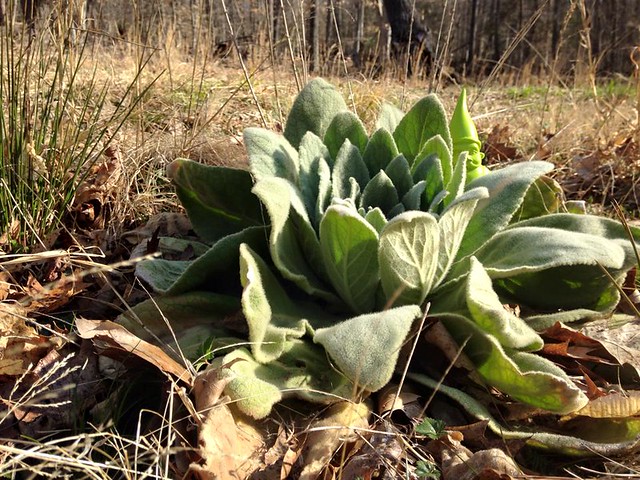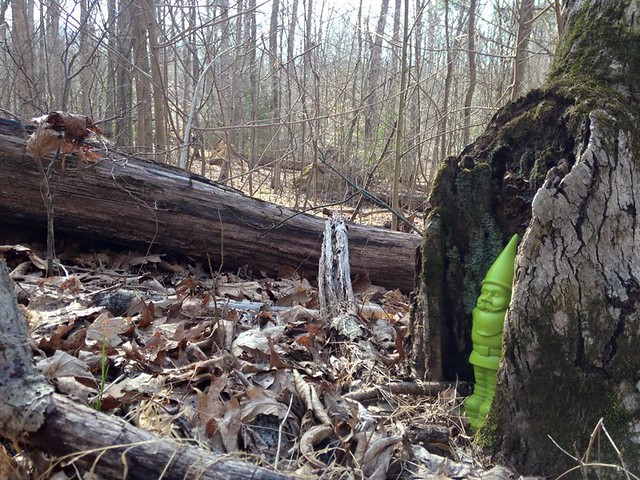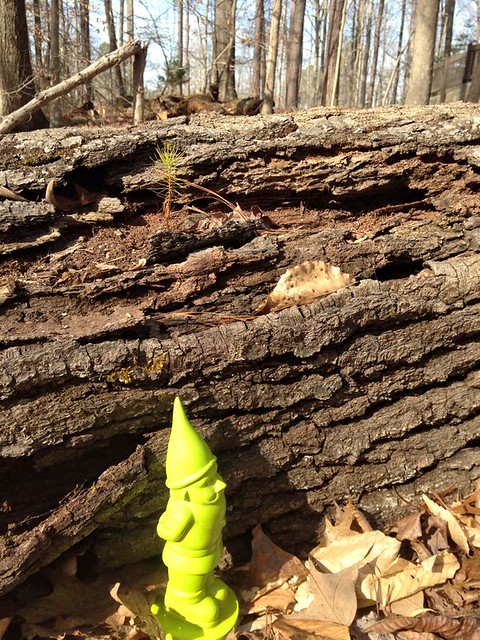As a staff member of the VirginiaState Parks Central Office I spend as much time in the field as I can, but often that includes meetings, conferences, and working with other park staff, so it’s a rare treat when I get time to just stop, look, and listen.

The common mullien
I got one of those precious opportunities today when I surveyed a potential butterfly habitat site atPocahontas State Park with Irene Frentz, our Resource Specialist for several of our Piedmont parks. We’ve been friends for years, and share a love of the woods we were in. Along with an old friend, I had a new one with me as well. He’s a bit…unconventional as an exploration partner, but he helps me see things from a new perspective, and together we made some wonderful discoveries. He hasn’t decided on what I should call him. Let me know if you have any suggestions!
The rosettes of the common mullein have made their appearance. This is an introduced species, brought over by European settlers, and it’s long been used as a medicinal herb to treat respiratory ailments. I’ve heard this plant referred to as Cowboy Toilet Paper. I wouldn’t recommend that. Those soft looking hairs are deceptive – they can be quite irritating when rubbed on the skin! Look for tall spikes of yellow flowers later in the year. But while it’s in the rosette stage, pay attention to the symmetry of the leaves. This reminds me of looking straight down into a pine cone.
As we walked up the trail we came across a lovely stand of paw-paws. This is an understory tree, and it’s lovely, smooth gray branches had tight little fists of flower buds on them. I thought of someone stretching and waking up, raising their arms up and out. This summer those flowers will become delicious, sticky sweet fruit reminiscent of pineapples and bananas. Woodland creatures love them. When the paw-paws are ripe you’ll find piles of scat on the trails full of their seeds. Flitting and singing among the branches were a pair of yellow-throated warblers. Staying still and quite was key to observing this active pair.

Can you spot my exploration partner?
As we neared the end of our too-short walk we came across a tree which had given many years of oxygen, shade, shelter, and all the other wonderful things trees give to the world, and which had reached the end of that life phase and moved on to another. It lay in repose on the forest floor, and was now a home for hundreds of insects, animals, fungi, and plants. The death of the oak meant hope for this tiny new life – a loblolly pine cradled in a crevasse in the bark.

If you would like to get outside and explore Pocohontas State Park, it is just 20 miles from Richmond and offersboating, picnicking, camping, camping cabins, hiking, and nature and history programs.
